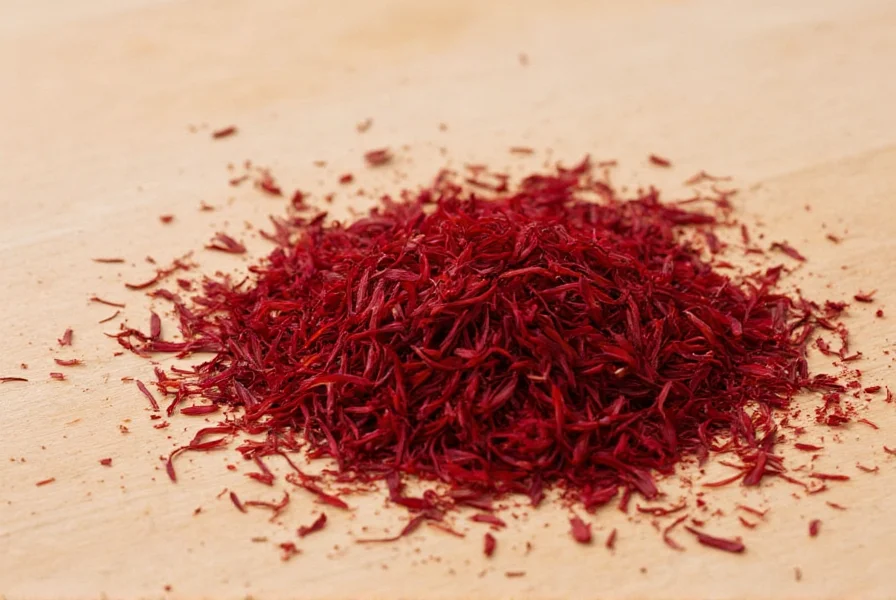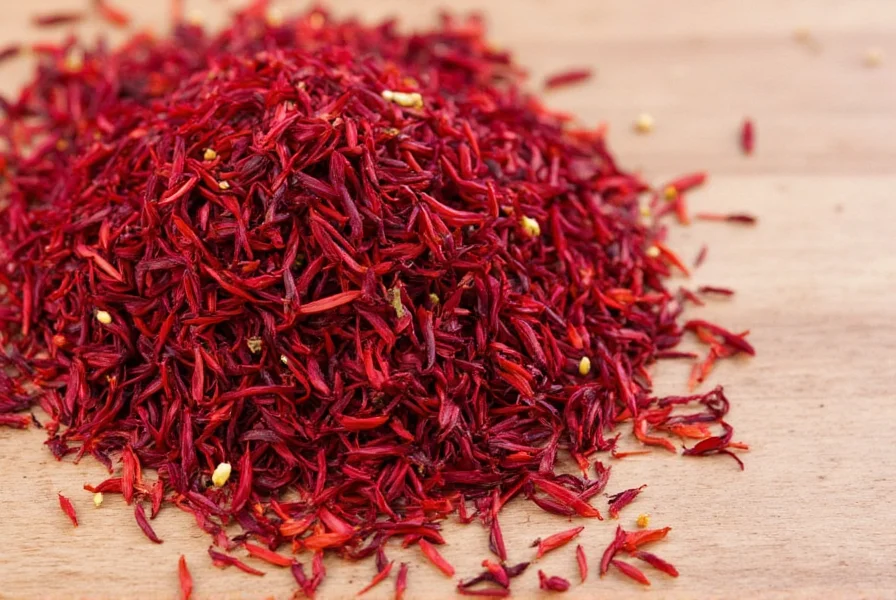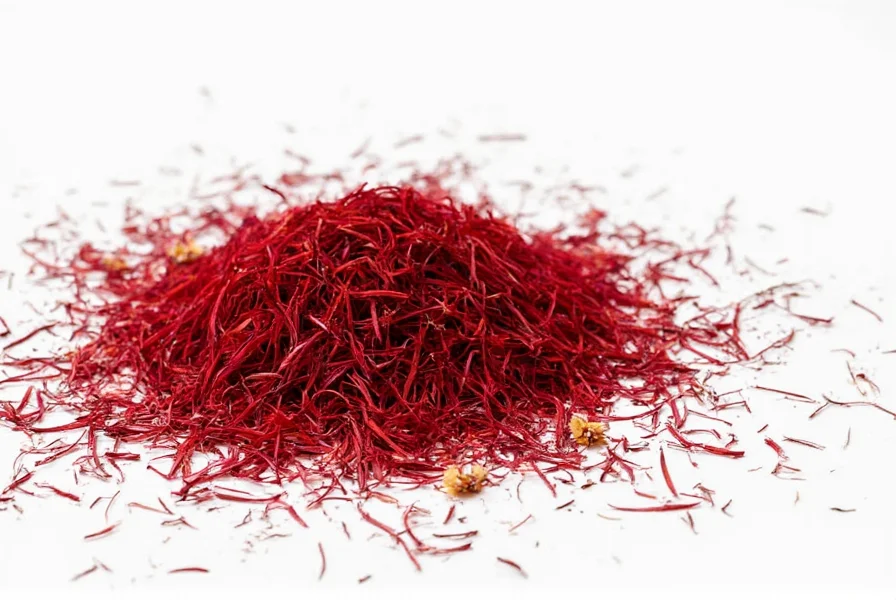Saffron, derived from the delicate stigmas of Crocus sativus flowers, ranks as the world's most expensive spice by weight. This precious golden spice has been valued for millennia not just for its distinctive flavor and color, but for its remarkable health-promoting properties. Modern research now validates many traditional uses of saffron, revealing specific biochemical mechanisms behind its therapeutic effects.
Understanding Saffron's Bioactive Powerhouses
Saffron's health benefits stem primarily from three key compounds:
- Crocin - The carotenoid responsible for saffron's vibrant color, with potent antioxidant and anti-inflammatory properties
- Safranal - The compound behind saffron's distinctive aroma, showing neuroprotective effects in studies
- Crocetin - A metabolite of crocin with demonstrated benefits for cognitive function and circulation
These compounds work synergistically, creating effects greater than any single component alone. Unlike many antioxidant-rich foods, saffron's bioactive compounds demonstrate high bioavailability, meaning your body can effectively absorb and utilize them.
| Compound | Concentration in Saffron | Primary Health Effects |
|---|---|---|
| Crocin | 6-10% | Antioxidant, anti-inflammatory, mood support |
| Safranal | 0.5-1.0% | Neuroprotective, anxiolytic, antioxidant |
| Crocetin | Trace amounts | Improved oxygen diffusion, cognitive support |
Science-Backed Health Benefits of Saffron
Mood Enhancement and Depression Management
Multiple clinical trials demonstrate saffron's effectiveness for improving mood. A comprehensive meta-analysis published in Human Psychopharmacology found that saffron extract (30 mg daily) showed comparable efficacy to conventional antidepressants like fluoxetine and imipramine for treating mild-to-moderate depression, with fewer side effects. The mechanism appears related to saffron's ability to modulate serotonin, dopamine, and norepinephrine levels in the brain.
Researchers at UCLA found that saffron's active compounds inhibit the reuptake of these key neurotransmitters, similar to how selective serotonin reuptake inhibitors (SSRIs) work, but through multiple pathways simultaneously. This multi-target approach may explain why some patients respond better to saffron than to conventional medications.
Eye Health Protection
Saffron shows particular promise for maintaining vision health. Italian researchers discovered that daily supplementation with 20 mg of saffron extract improved retinal function in patients with early age-related macular degeneration (AMD). The carotenoids in saffron accumulate in the retina, where they protect photoreceptor cells from oxidative damage and improve blood flow to retinal tissues.
Unlike beta-carotene supplements that convert to vitamin A, saffron's crocin directly protects retinal cells without conversion steps, making it potentially more efficient for eye health. Long-term studies suggest regular saffron consumption may slow the progression of AMD and diabetic retinopathy.

Antioxidant and Anti-Inflammatory Effects
Saffron ranks among the most potent natural antioxidants. Its ORAC (Oxygen Radical Absorbance Capacity) value significantly exceeds that of many fruits and vegetables. The spice's antioxidant compounds neutralize free radicals throughout the body, reducing oxidative stress that contributes to chronic diseases.
Research in Phytotherapy Research demonstrated that saffron extract reduced markers of oxidative stress by 30-50% in human subjects after just four weeks of supplementation. These antioxidant effects translate to potential protection against cardiovascular disease, as saffron helps prevent LDL cholesterol oxidation—a key step in atherosclerosis development.
Additional Potential Benefits
Emerging research suggests saffron may offer several other health advantages:
- Menstrual discomfort relief - Studies show saffron can reduce PMS symptoms including irritability, headaches, and cravings when taken at 30 mg daily starting days before menstruation
- Cognitive support - Animal studies indicate saffron may protect against Alzheimer's disease by inhibiting amyloid-beta aggregation and tau protein phosphorylation
- Appetite regulation - Preliminary evidence suggests saffron extract may reduce snacking frequency and curb emotional eating
Safety, Dosage, and Practical Usage
Saffron demonstrates an excellent safety profile when consumed in appropriate amounts. For therapeutic effects, research supports:
- Mood support: 30 mg of standardized saffron extract daily
- Eye health: 20 mg of saffron extract daily
- General antioxidant support: 15-30 mg daily or 0.5-1.0 grams of dried saffron threads
Exceeding 5 grams daily may cause adverse effects including dizziness, nausea, and in extreme cases (above 20 grams), serious toxicity. Pregnant women should avoid medicinal doses as saffron may stimulate uterine contractions. Those taking antidepressants should consult a healthcare provider before using saffron supplements due to potential interactions.
When selecting saffron, look for deep red threads with minimal yellow styles—this indicates higher concentrations of active compounds. Pure saffron should never be bright orange or uniformly yellow. For maximum benefit, steep threads in warm liquid (not boiling) for 10-15 minutes before use, as heat helps release the bioactive compounds.

Limitations of Current Research
While saffron research shows promise, important limitations exist. Most clinical trials have relatively small sample sizes and short durations (typically 6-12 weeks). Long-term safety data beyond one year remains limited. Additionally, many studies use standardized extracts rather than culinary saffron, making direct translation to dietary use challenging.
Researchers emphasize that saffron should complement—not replace—conventional medical treatments for serious conditions. The spice works best as part of a comprehensive approach to health that includes a balanced diet, regular exercise, and appropriate medical care.
Practical Ways to Incorporate Saffron
You don't need expensive supplements to benefit from saffron. Try these culinary approaches:
- Steep 5-10 threads in warm milk or broth for 10 minutes, then add to rice, soups, or sauces
- Grind threads with a pinch of sugar using a mortar and pestle to release compounds before adding to recipes
- Add to morning smoothies or golden milk for antioxidant benefits
- Use in baking—saffron pairs well with citrus, honey, and nuts
Remember that a little saffron goes a long way. Just 0.1 gram (about 20 threads) can flavor an entire dish while providing meaningful health benefits.
Frequently Asked Questions
How quickly does saffron work for improving mood?
Clinical studies show mood improvements typically begin within 1-2 weeks of consistent daily use at 30 mg of standardized extract. Significant effects usually appear by week 4. Unlike pharmaceutical antidepressants that may take 4-6 weeks, saffron's multi-compound action often produces faster initial results while building more gradually for sustained benefit.
Can I get enough saffron benefits from cooking with it?
Regular culinary use provides meaningful antioxidant benefits, but therapeutic effects for specific conditions like depression typically require higher concentrations found in standardized extracts. Using 0.1-0.2 grams (20-40 threads) daily in cooking offers general health support, while clinical studies for mood support use 30 mg of concentrated extract, equivalent to approximately 1 gram of dried saffron.
Does saffron interact with medications?
Saffron may enhance the effects of antidepressants (SSRIs, MAOIs) and sedatives, potentially causing excessive drowsiness or serotonin syndrome. It may also interact with blood pressure medications due to mild hypotensive effects. Always consult your healthcare provider before combining saffron supplements with prescription medications, especially if you take drugs for depression, anxiety, or hypertension.
How does saffron compare to turmeric for health benefits?
Both spices offer significant health benefits but work through different mechanisms. Turmeric (curcumin) excels at reducing systemic inflammation, while saffron shows stronger effects for mood regulation and eye health. Saffron's compounds demonstrate higher bioavailability than curcumin without needing black pepper for absorption. For comprehensive antioxidant support, using both spices provides complementary benefits targeting different physiological pathways.











 浙公网安备
33010002000092号
浙公网安备
33010002000092号 浙B2-20120091-4
浙B2-20120091-4